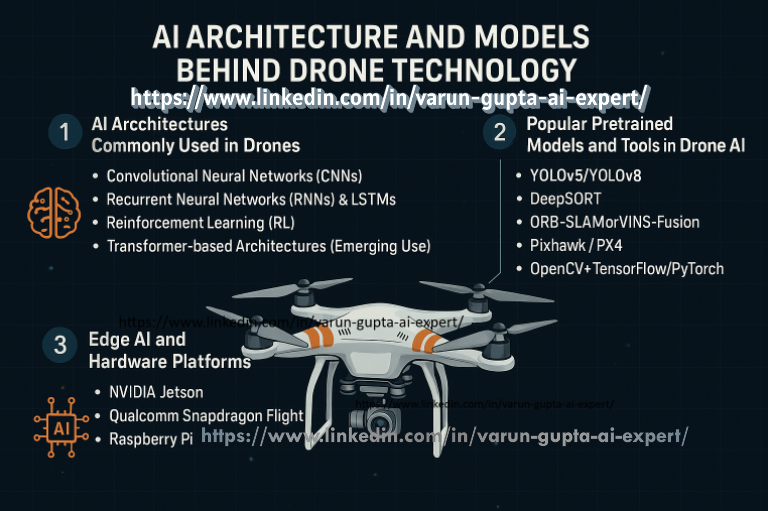The AI architecture and models behind drone technology vary depending on the application (e.g., navigation, object detection, surveillance, delivery), but typically involve a combination of the following:
1. AI Architectures Commonly Used in Drones:
a. Convolutional Neural Networks (CNNs)
Used for:
- Object detection and recognition
- Image segmentation
- Target tracking
Examples:
- YOLO (You Only Look Once)
- SSD (Single Shot Detector)
- Faster R-CNN
- U-Net (for segmentation tasks)
b. Recurrent Neural Networks (RNNs) & LSTMs
Used for:
- Time-series data analysis (e.g., trajectory prediction)
- Sensor fusion and flight path optimization
c. Reinforcement Learning (RL)
Used for:
- Autonomous navigation and decision-making in dynamic environments
- Obstacle avoidance
Frameworks/Algorithms:
- Deep Q-Networks (DQN)
- Proximal Policy Optimization (PPO)
- Soft Actor-Critic (SAC)
d. Transformer-based Architectures (Emerging Use)
Used in:
- Multi-agent drone communication and coordination
- Situational awareness from multimodal data (e.g., vision + GPS + sensor)
